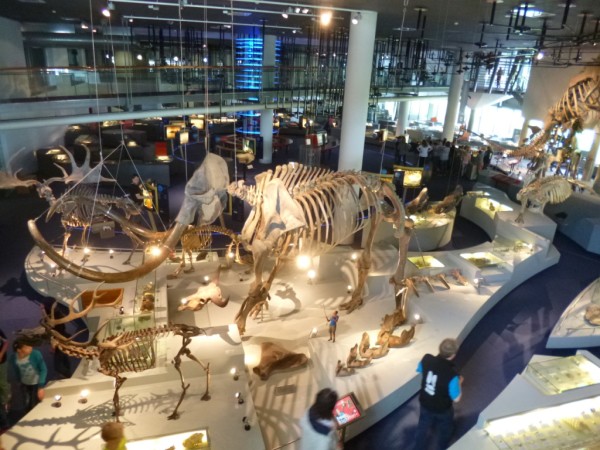Last month I posted about some of the art museum apps I used while in the US back in August. Now I’ll follow up with a couple of apps I used at the American Museum of Natural History.
AMNH Explorer
The AMNH is quite a labyrinth and I found it tricky to navigate. It spans five levels over a large historic building plus a more recent extension (Rose Center and Hayden Planetarium).

Visitor routing around the planetarium means you can’t easily retrace your steps if you find you’ve missed something (it once took me a couple of attempts to re-locate a gallery as I could not find a way to get back down a floor once I’d gone ‘up’ an escalator with no apparent ‘down’ counterpart). The main building has three main stairways and sometimes special exhibitions (entered through pre-paid timed tickets only) blocked logical pathways if you were trying to tackle the museum fairly systematically floor-by-floor (as I was).
This is where the Explorer apps came in – I used both the paper map and the app to assist my navigation of the complex space, as well as to ensure I hadn’t missed anything noteworthy.

One feature I liked about the Explorer app was the selection of tailored tours:

You could also select specific exhibits:


In theory, the app also had the capacity to give you directions to a highlighted exhibit from anywhere inside the museum. I say “in theory” because I didn’t have much luck getting this to work in practice – the app struggled to find my location*, and so defaulted back to giving me directions from the main entrance. Sometimes it was tricky to relate these directions back to where you actually were, particularly in the higher/deeper reaches of the museum. But I like the idea, even if the execution was less than perfect.
Beyond Planet Earth
This app was an accompaniment to a specific special exhibition that was showing while I was at AMNH. It’s pitched as an Augmented Reality app, although I don’t think I really grasped that that was the point at the time. The idea seemed to be to find and scan the 11 icons scattered around the exhibition (a good tactic to encourage looking at everything!). You could collect the set and then share them via social media.

When you scanned an icon a little animation came up on your screen, but calling them Augmented Reality is drawing a bit of a long bow if you ask me. . . But then maybe I just missed the point? Also some of them were a bit hard to scan properly in the low exhibit lighting so I became preoccupied by the task itself rather than the outcome.

I’m pretty sure I wasn’t part of the target audience for this app; it seemed to be a game designed for kids rather than for older visitors with pretty good existing knowledge of the subject matter^ (which is fair enough!). I still enjoyed the ‘collecting’ challenge even if there wasn’t really much of a pay off beyond that for me.
In any case, any app was bound to be upstaged by the hero of the hour: the Mars Curiosity Rover, whose safe landing had been announced only a couple of days before my visit.

* I wonder if this was a technical glitch because I was using wi-fi rather than 3G.
^ I have a fond attachment to space exhibits: my first major exhibition project was the National Space Centre in Leicester, and I worked on a couple of exhibitions for them subsequently.




















